Mississippi River Cruise
New Orleans, LA
Last modified:
We were now back on schedule, but the details of our itinerary were different. The city tour that would have been on the previous day, was pushed to today with a modified itinerary. The session at the New Orleans Cooking School that would have been on the previous evening was also pushed to today in lieu of the gala final dinner. The WWII Museum tour originally scheduled for today became optional. A few people elected the museum, but most chose the city tour.
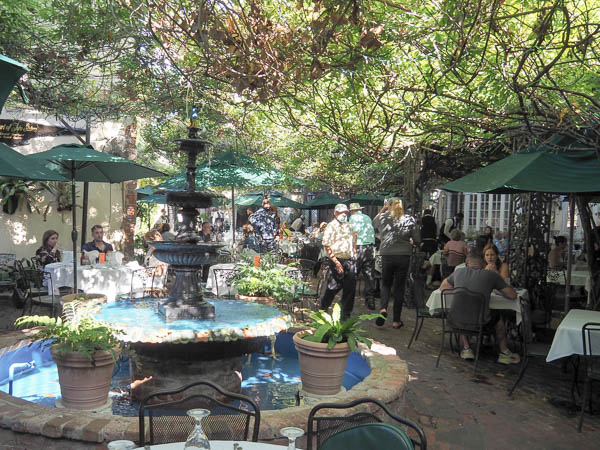
The day started with a jazz brunch in the Court of the Two Sisters, or as Jim always calls it, the Place of the Several Siblings.
We enjoyed sitting under the wisteria. The selection of goodies was large and tasty. I couldn't pass up the Eggs Benedict, which were freshly prepared to order rather than congealing on a steam table.
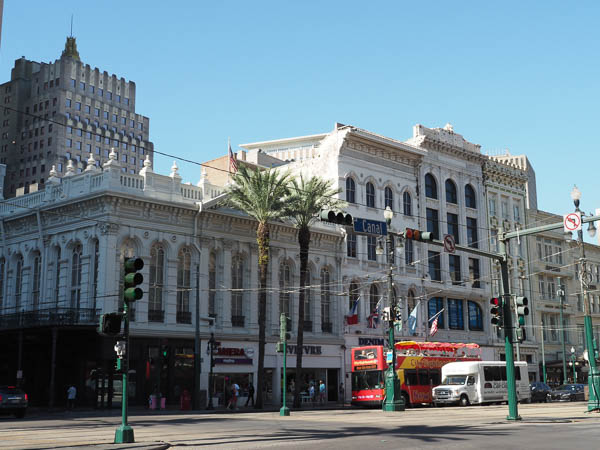
After brunch we walked to Canal Street where we met our tour bus and guide. I'm sorry I don't remember the guide's name because he was outstanding. A native New Orleanian, he spent a good bit of his life in California, but family and Le Bons Temps lured him back.
Rather than the standard touristic spots, he focused on African American history in the city -- especially the history of the free Black population.
As we drove through the Ninth Ward, heavily damaged by Katrina flooding, there had been some progress since I traveled to NOLA with a church mission group in 2008.
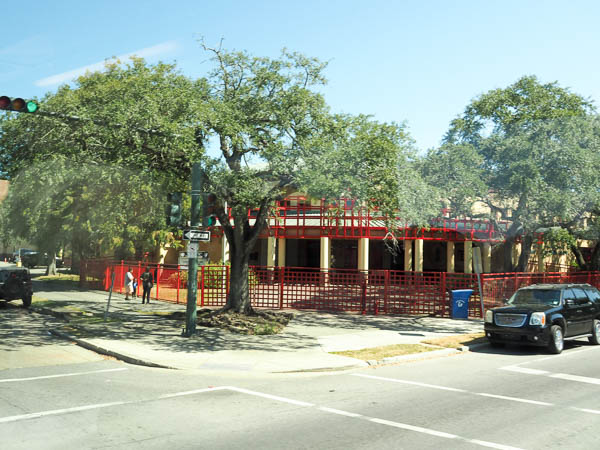
The Dr. Martin Luther King, Jr., charter school was one site on our drive-by of the Ninth Ward. After Katrina the city school board dragged its feet reopening this and other schools until the neighborhood parents grabbed the bull by the horns and began rebuilding.
The state took over the vast majority of New Orleans schools after Katrina for poor performance and corruption. Most of those schools became charter schools, as did this one. It has but has since returned to the local school district.
The perceived success of the charter schools in New Orleans is controversial, with some critics pointing out that the highest-achieving schools have shut out at-risk and special-needs students.
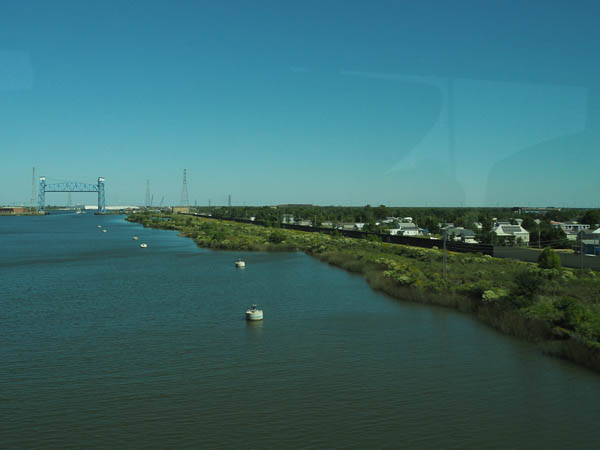
The Industrial Canal was the source of the worst flooding in New Orleans during Katrina. I won't attempt to discuss the specific sequence of failures. More is available at the link.
This image, taken from the bus, shows that the water level is higher than the surrounding neighborhood. Most of New Orleans is famously below sea level. Or is it? A 2018 article in The Atlantic describes how human action has caused the city, originally sited on what passes for "high ground" in the region, to subside.
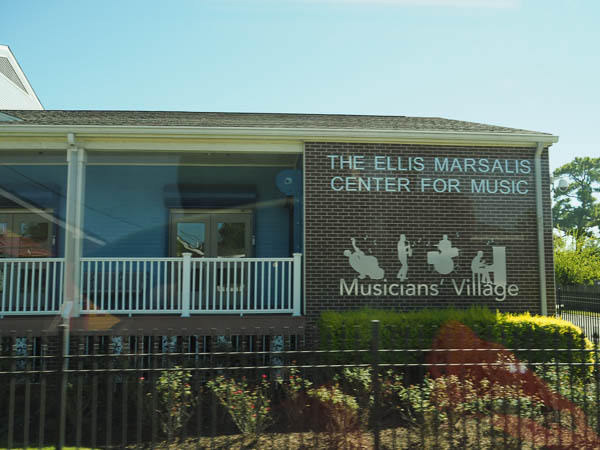
Early rebuilding at Musicians' Village after Katrina focused on bringing music back to the city. New Orleans natives Harry Connick, Jr. & Branford Marsalis were among its sponsors. Habitat for Humanity volunteers did the construction.
The long-term success of this project was greater than the much-publicized Brad Pitt commitment to rebuild. Many of those homes had construction problems, but in 2022 an agreement was reached to repair or replace failing structures.
The Ellis Marsalis Center for Music, dedicated to Branford and Wynton Marsalis' father, serves the neighborhood with special focus on underserved children and youth.
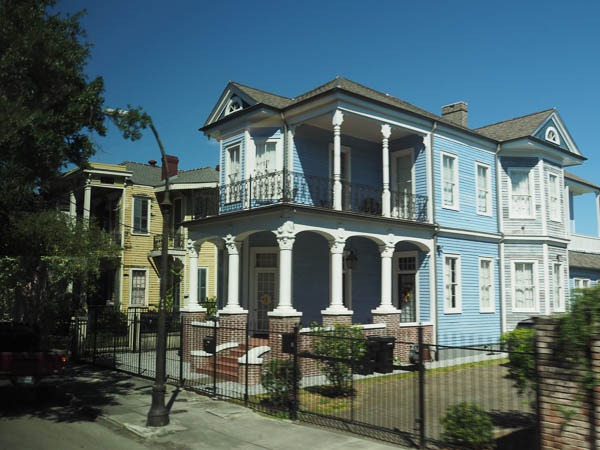
The Tremé neighborhood (pronounced Tree-MAY) was the center of free Black culture in New Orleans dating back to the 18th century. Many of the large houses have been restored and others were being worked on.
New Orleans, with its French founding and later rule by Spain, had much less racial bias than the United States. Once the area was acquired by the US, this began to change and by 1830 racial attitudes had hardened.
My family traces part of its ancestry to New Orleans and when I was in school I did a fair amount of research into its culture. I uncovered the extra-marital relationships between White men and women of color. Some question the historicity of these relationships, but I know from genealogical research, that some men maintained two "families." The baptisms of children from both relationships were recorded in the parish records.
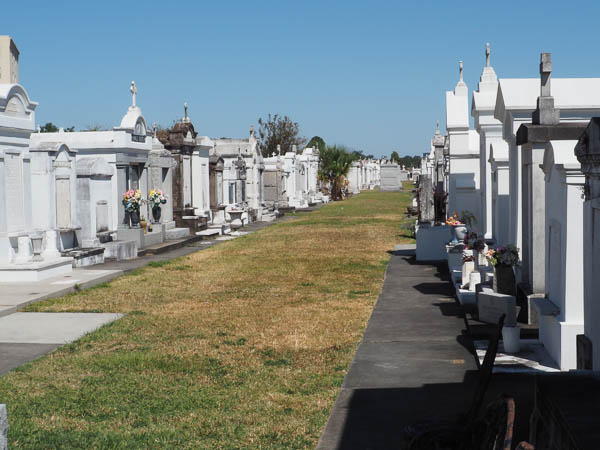
One of the stops in the tour was at St. Louis Cemetery #3. The high water table dictates above-ground tombs.
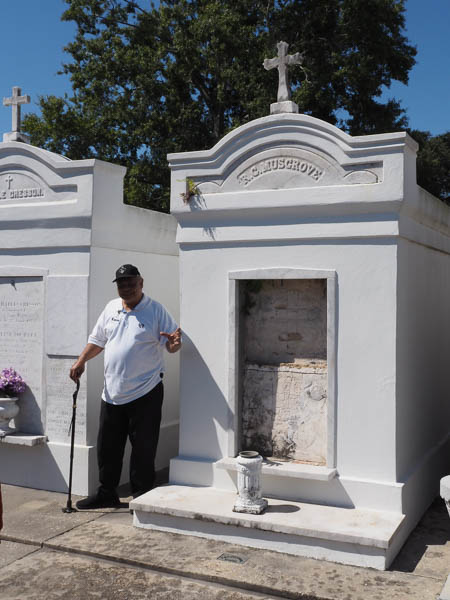
Our guide explains the burial practices. A family tomb might contain two sections: one for a recent burial and one that was a ossuary containing the bones of earlier burials. In this way, many generations might occupy the same tomb. In this particular tomb, the facing panel is missing, so the two segments can be seen.
An online description of the burial practices matches pretty much what the guide told us.
The neighboring mausoleum belonged to the Cresson family. A colleague of mine from Honeywell hailed from New Orleans and his family name was Cresson. I had to wonder if they were relations.
Although most tombs in this relatively new cemetery were well kept, some were not. Those families who could not afford perpetual care and had either died out or moved away left no one to care for the graves.
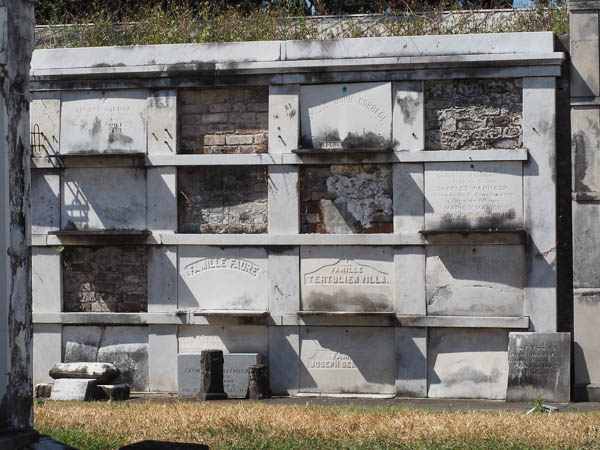
Our guide pointed out these niches in the cemetery walls. They were "ovens" used if the family had multiple burials before the bodies had time to decompose. The heat of such niches would rapidly decompose the dear departed until the bones could be transferred to the main tomb.
 Our next stop was the
New Orleans Museum of Art Sculpture Garden. Among the many sculptures
I found a version of the
Blue Dog that has become a New Orleans icon of sorts.
Our next stop was the
New Orleans Museum of Art Sculpture Garden. Among the many sculptures
I found a version of the
Blue Dog that has become a New Orleans icon of sorts.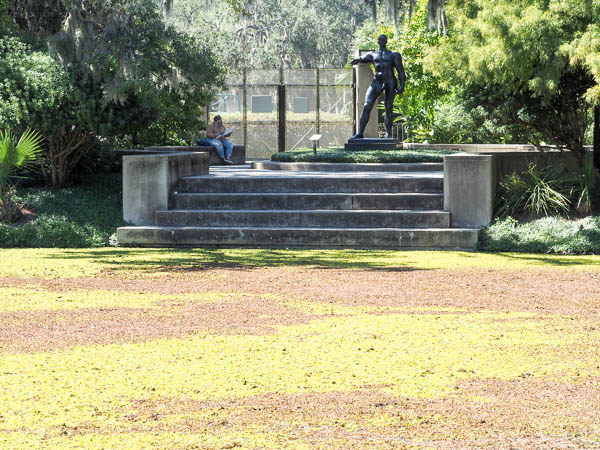
It seems strange that there are no children playing on the "lawn" in front of this sculpture. That's because the "lawn" is a pond covered with a variety of water weeds. It would make for a soggy playground.
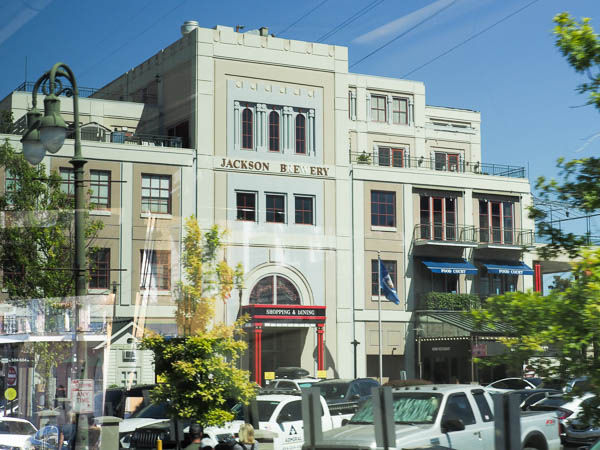
As we returned to the French Market for lunch at the Market Cafe, we passed the old Jax Brewery building. Adjacent to the river levee and near Jackson Square, it now houses apartments and shops.
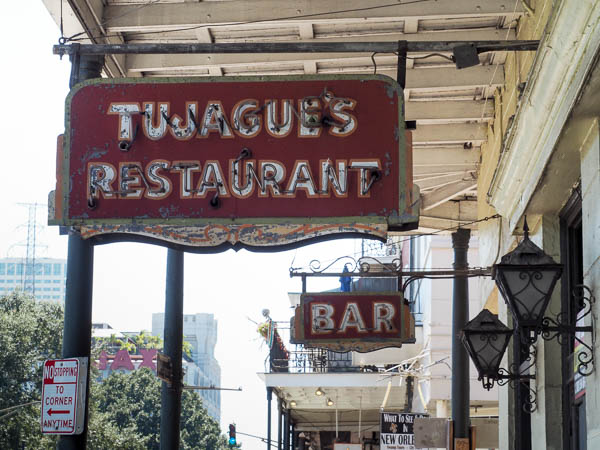
One of our favorite New Orleans restaurants, Tujague's (pronounced TWO-jacks), was once located across the street from the French Market. We were dismayed to see it closed, but relieved to learn that it had simply relocated.
Nevertheless we fear that it may have lost some of its funky appeal by the move.
Our original plan had been to stay a couple of extra days in New Orleans on our own. You may be assured that dinner at Tujaque's would have been included. Because of our upcoming house sale and move, however, we elected to return at the close of the formal tour. It will have to be another day to see if the signature boiled brisket and shrimp remoulade are as tasty as they always were.
That evening our group enjoyed a cooking demonstration at the New Orleans School of Cooking for our final meal together. (I prefer my family's gumbo recipe to theirs.)
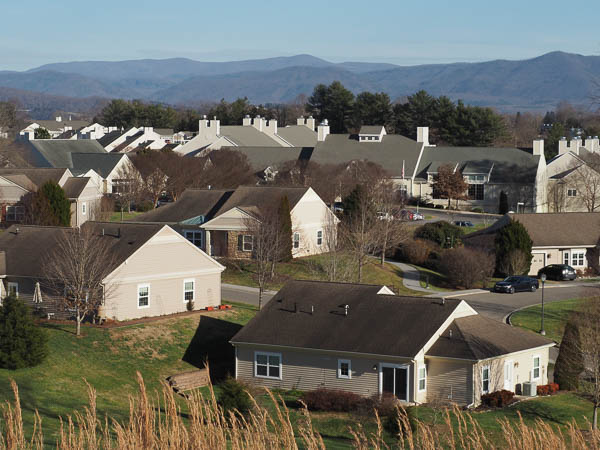
Our trip was full of surprises and adjustments, but it was a welcome respite from the stress and pressure of an estate auction and move preparation. Even though I developed COVID shortly after returning home. At least Jim escaped the infection.
In the weeks following our return, we successfully made the move to our temporary apartment at Kendal at Lexington. It is a planned "Life Care Community" not far from our old house (maybe one mile as the crow flies; rather longer if you stick to streets). We anticipate relocating to one of the cottages when one becomes available, but at least we won't have to "right size" again.
Click your "back" button to return to the previous page or click for our picture album.